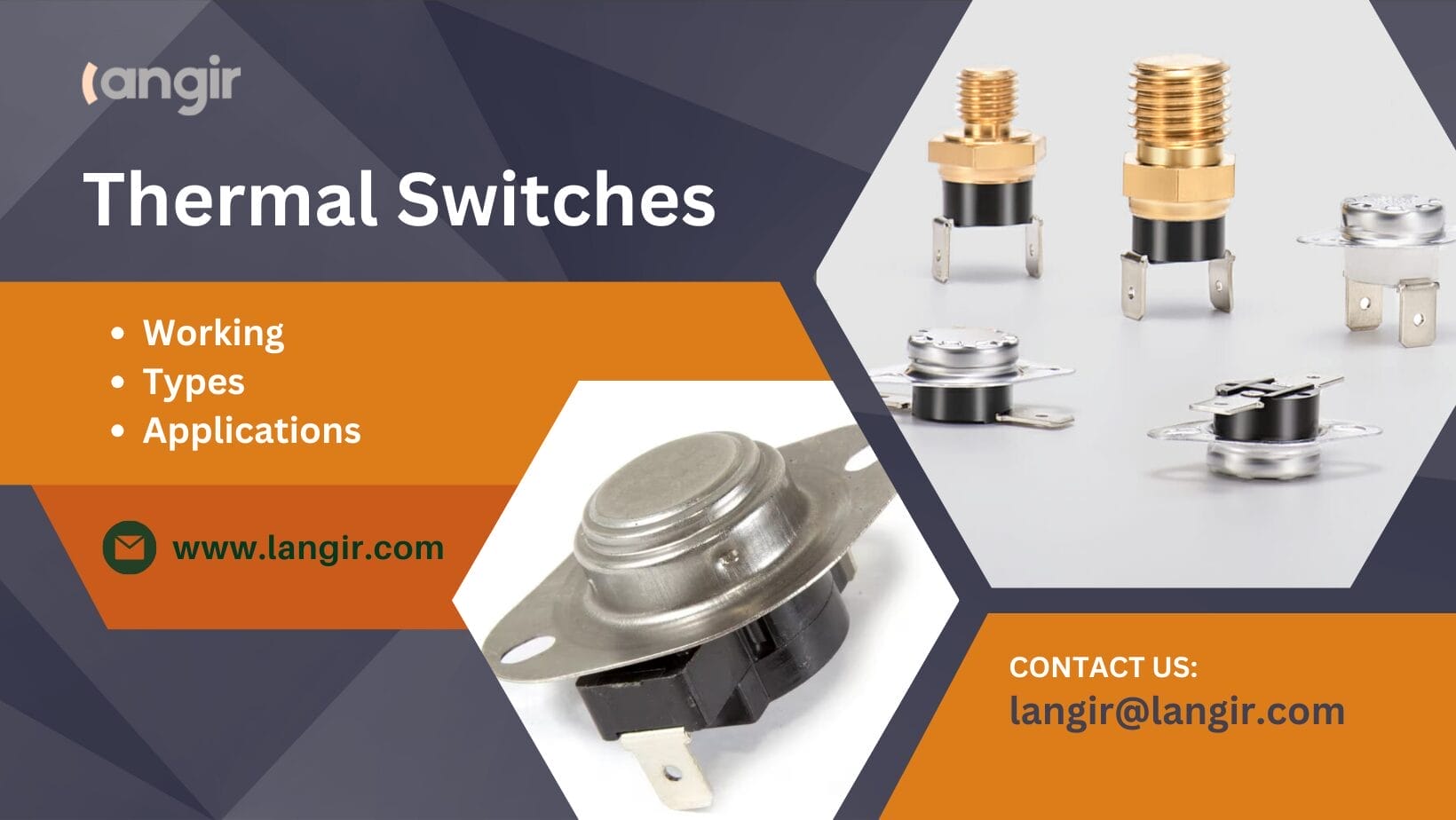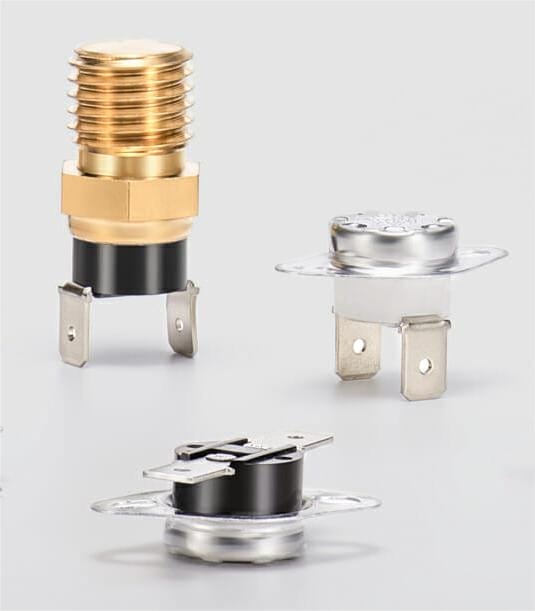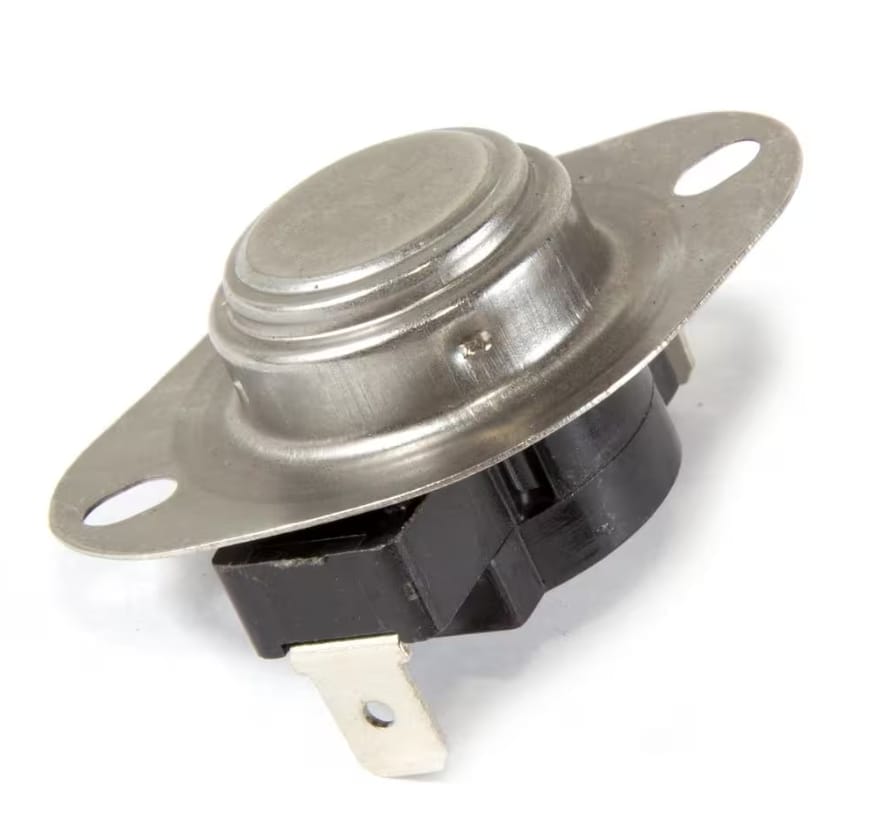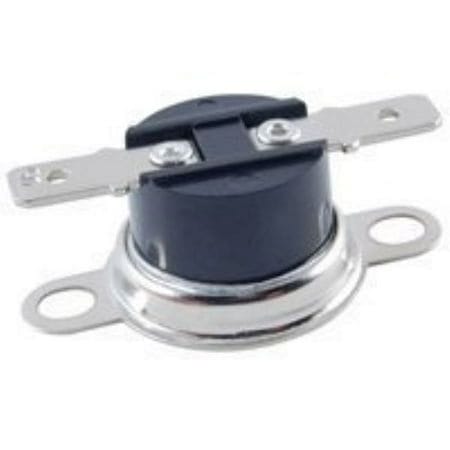
Switches are devices that alternate between different states, options, or functions. Many types of switches are available, each serving a specific function. One such switch that has gained significant attention is known as a thermal switch.
These switches are employed in various industries like foodstuffs, pharmaceuticals, and automotive engineering. The purpose is to maintain safe operating conditions and prevent damage due to excessive heat.
Read on to learn more about thermal switches, their working, applications, and benefits!
What is a Thermal Switch?
Thermal or temperature switches are those switches that change their position from normally open to normally closed when a specific temperature is reached. This switch is helpful in managing and controlling temperatures in manufacturing and other industrial processes. The goal is to prevent overheating in equipment and ensure safe industrial operation. Let’s look at the symbols of thermal switches:
Construction of a Thermal Switch
Here’s an overview of the construction of a thermal switch that helps you understand it better:
Components
- Switch Case
- Range Nut
- Range Spring
- Main Spindle
- Bellows
- Capillary
- Temperature Sensing Bulb
In the Temperature-Sensing Bulb, a specific fluid notices temperature variations and responds to them. As the temperature in the bulb increases, there’s an increase in pressure within the bellows, resulting in their compression.
Now, the spindle moves up until the spring’s force and the pressure on the bellows are in equilibrium with each other. The result is either an ON or OFF position, depending upon the switch’s set point.
Working Principle of Temperature Switches
Below is the general overview of the working of a thermal or temperature switch:
Just like a typical switch, a temperature switch has temperature-sensitive contacts. When the temperature inside the switch increases or reaches a specific threshold due to heat generated by the surrounding environment or the equipment itself, the contacts open quickly.
This prevents excessive heat from damaging the equipment. In contrast, when the temperature goes below the set point, the contacts close, completing the circuit and allowing the switch to work again.
Types of Thermal Switches
Various types of temperature switches are available in the market, each with a varying design and working mechanism. Let’s discuss some common ones to get an idea of what suits your needs the best:
Bimetallic Disc or Snap Action Switches
Bimetallic Disc or Snap-Action Thermostat switches are a common type of thermal control switch. These switches have two metal strips bonded together, each having a different thermal coefficient. Due to this, when the temperature increases, the strips respond differently, which causes them to bend or warp.
This bending mechanism, either to open or close contacts, results in a quick snap. That’s why these switches are also named snap switches. The benefits of Bimetallic Disc or Snap Disc Switches include their compact size and low price tag.
Thermal Reed Switches
Thermal Reed Switches are another type of thermal switch comprising a Reed Switch, a Thermal Ferrite, and two permanent magnets. If the temperature is lower than the Thermal Ferrite’s Curie Point, the Reed Switch contacts will stay closed.
However, as the temperature rises above the Curie Point of the Thermal Ferrite, the magnetic field surrounding the switch changes, which results in the opening of the Reed Switch contacts. These switches are fully hermetically sealed and continue to work even in challenging conditions. They are also quite reliable in sensing temperature changes.
Gas-Actuated Thermal Switches
Gas-Actuated Thermal Switches, or you can say vapor-tension thermal switches, have a sensing bulb containing gas and a diaphragm or piston. When temperature increases, the gas inside the sensing bulb expands.
This expansion exerts pressure on the diaphragm, causing the switch to change its state from closed to open or vice versa. Gas-Actuated Thermal Switches are high-quality and offer accurate results, which makes them useful for safety-critical applications.
Best Thermal Switches for You
Langir brings the best thermal switches for you. Here’s our top-notch product:
Snap Action Thermostat
The Langir Snap Action Thermostat, especially the KSD301 series, is a hermetically sealed bimetal thermostat with a 1/2″ disc. This switch is used in various applications, offering both automatic and manual reset options. Its electrical rating includes a maximum of 16A at 125V AC for resistive load. On top of that, the differential range of 10 – 30K allows precise temperature regulation.
What truly sets this resettable thermostat switch apart from others is that its operating temperature tolerance stands at ±3℃ or ±5℃. For safety, this unique thermal switch features a dielectric strength of AC 1000V for 1 minute or AC 1800V for 1 second. Let’s talk about reliability – with an impressive lifecycle of 100,000 cycles for 16A, this switch serves you for years without any issues.
Benefits of Langir Thermal Switches
Let’s now discuss the benefits you can enjoy by investing in Langir’s thermal switches:
Langir’s thermal switches are small in size, which makes them perfect for various home appliances, such as boilers, heaters, ovens, and more. You can easily integrate it into any type of equipment without worrying about it taking up a lot of space.
The safety features of this temperature switch are unmatchable. It accurately senses temperature changes and maintains safe operating conditions for electrical equipment and appliances. This reduces the risk of fires and prevents damage to your expensive equipment.
The Langir Snap Action Thermostat is a hermetically sealed bimetal thermostat. No moisture or dust can enter the switch. This durable sealing allows the switch to function in all types of environments.
The operating temperature of the Langir’s Snap Action Thermostat is ±3℃ or ±5℃, which is highly versatile. This means these switches operate smoothly in both hot and cold conditions, providing you peace of mind and promising optimal functionality for your appliances.
Applications of a Thermal Switch
Thermal switches find applications in various industrial and home equipment. Some of the common applications include:
Due to their accurate temperature monitoring and control capabilities, temperature switches are used in various heating systems, including boilers, circulation pumps, air heaters, and burners.
In various industries, such as pharmaceuticals, automotive engineering, and food processing, thermal switches have extensive applications. For instance, in manufacturing a product, this switch is employed to control the temperature during the process and to ensure a quality and safe product.
Restaurants and home kitchens are also some areas where you can use a thermal or temperature switch. These switches are used in appliances like ovens, grills, or refrigerators. The purpose is to control and maintain accurate food temperature during cooking and storage to prevent any risk of contamination and spoilage.
Power equipment like RF power amplifiers, motor drives, and other power supplies also benefit from a temperature switch. This switch triggers action based on predefined temperature thresholds to reduce the chances of overheating and ensure the longevity of the power equipment.
Difference Between Thermal Switch and Thermostat
Many people often confuse a thermal switch with a thermostat, but these terms aren’t interchangeable. There are significant differences between both, and you should know them for proper usage.
- The thermal switch is also known as a temperature switch, while the second name for a thermostat can be a thermometer or indicator.
- A thermal switch is used for temperature sensing and protection. It detects temperature changes and activates or deactivates a circuit depending on preset temperature thresholds. In contrast, a thermostat is a device that regulates temperature by turning a heating or cooling system on or off in order to maintain the set temperature.
- Thermal switches are bi-stable electrochemical devices, while thermostats are good examples of closed-loop control devices.
- Generally, thermal switches are classified into two types: electrical and mechanical. Meanwhile, thermostat types include programmable, non-programmable, and smart.
- Temperature switches come in two main parts: a temperature-sensing element and snap-action contacts. On the other hand, thermostats feature a flange, frame, housing, and wax in a cylinder.
Buying Guide for a Temperature Switch
In case you are out there to shop for a temperature switch for your needs, you will be overwhelmed by the number of options available. Refer to the guide given below to ensure you pick the right switch without breaking the bank:
First, you should pay attention to the type of temperature switch. Depending on your applications, you can opt for bimetallic snap-action switches or gas-actuated ones. Each switch has unique features, so it’s important to pick the one that best suits your needs in terms of response time and accuracy.
Secondly, the lifespan of the thermal switch is an important consideration. You’ll, of course, want to invest in a switch that is top-notch in reliability and performance, eliminating the need for costly repairs and frequent replacement. For this, you should check the number of life cycles of a switch.
For instance, if the switch features 50,000 life cycles or more, it can serve you in the long run. In addition to that, factors like the quality of the switch’s materials also impact its overall durability and functioning. So, make sure to invest in products that are properly sealed or IP-rated to ensure protection from dust and moisture.
The operating temperature range refers to the temperature within which the thermal switch can accurately control and sense temperature. For instance, if the operating temperature tolerance of a switch is ±3°C, it means that it can maintain precise temperature control within a range of ±3°C from the set point. Looking at this specification when investing in a temperature switch is very important as it ensures a switch can function at a particular temperature without compromising the quality of the output.
Another thing you must consider when purchasing a thermal switch is your budget. Make sure to align the specifications you need in the switch with your available budget. Factors such as the brand reputation, quality of construction, and additional features may influence the price of the thermal switch.
FAQs
What is the Deadband of the Temperature Switch?
The deadband on a temperature switch refers to the difference between the set temperature and the point where the temperature increases a certain threshold. For instance, let’s consider a temperature switch that is set to turn on at 70°C and turn off at 75°C. In this, the deadband is 5°C because it’s the point where the switch remains inactive. However, the switch changes its position either to closed or open or vice versa.
Are Temperature Switches Normally Open or Closed?
Temperature switches can be both normally open and normally closed. A normally open switch is one in which the switch remains open or disconnected when the temperature is below a predetermined threshold. While in a normally closed switch, the switch is closed (connected) when the temperature is below the set point.
What is a Temperature Sensor, and Where It's Used?
Temperature sensors are devices that measure temperature variations (the degree of hotness or coldness) in a device. It then converts that data into electrical signals, which can be displayed, recorded, and used to control temperature-dependent systems. Temperature sensors are used in many industries, ranging from HVAC systems and automotive engines to medical devices.
What is the difference Between a Mechanical and Electrical Thermal Switch?
A thermal switch can be both mechanical and electrical. Electrical thermal switches rely on a power source to detect temperature changes and give an output. On the other hand, mechanical temperature switches are those that work depending upon the physical changes or deformations (expansion or warping) caused by temperature fluctuations.
Conclusion
Thermal switches are a great help in detecting temperature changes to open or close a circuit. These switches are used to prevent overheating in equipment and reduce the risk of fires. Various types of temperature switches are available in the market, ranging from bimetallic disc or snap action switches to reed and gas-actuated switches.
Wondering where to get high-quality thermal switches for your applications? Langir is your one-stop shop! We offer highly durable and compact Snap Action Thermostat Switches that work efficiently at a varying operating temperature.
Contact us today to explore our wide variety of snap thermal switches!
Send your inquiry now
All Langier News:
Read Moreelectronica 2024 Hall-Stand No.: A2 160 November 12-15, 2024 Tr...

 English
English 简体中文
简体中文








